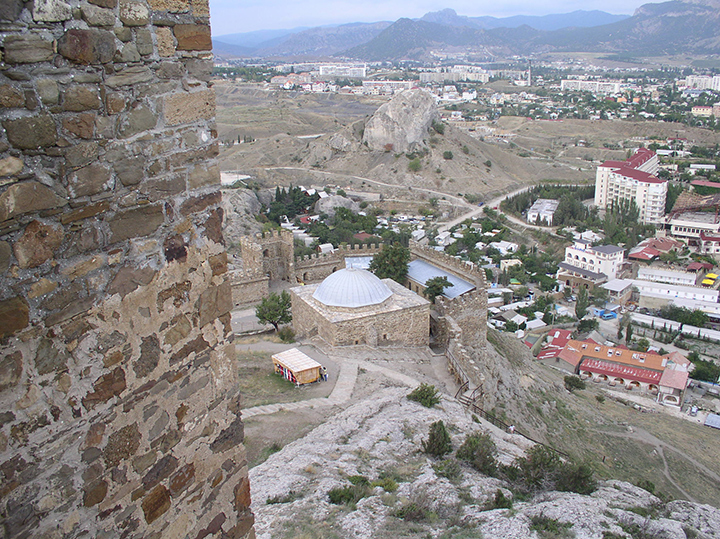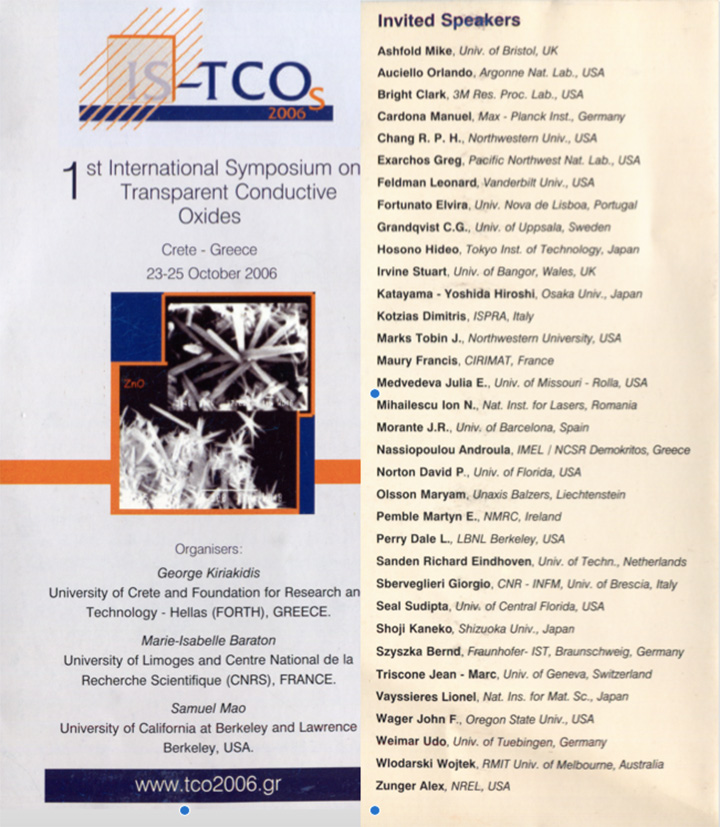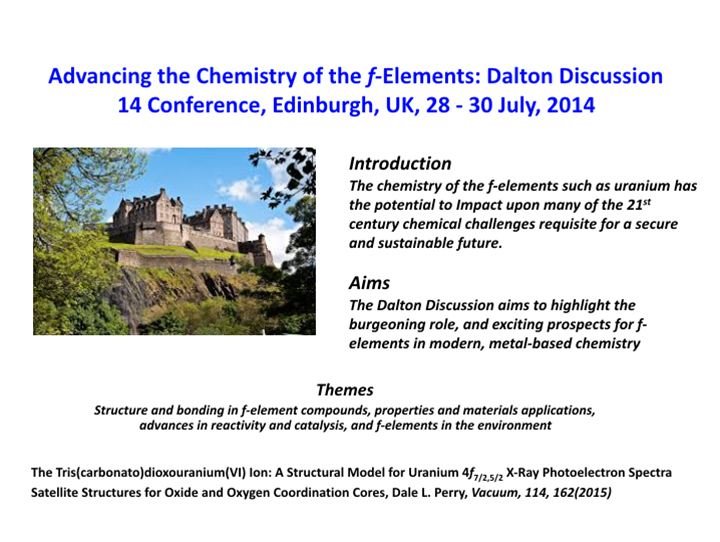 |
 |
..Meetings, Symposia, and Workshops |
| Islands of chromium (yellow) on a lead(II) sulfide semiconductor surface | |
Dale L. Perry
|
|
|
Meetings, Symposia, and Workshops< |
Symposium on Nuclear Radiation Detection Materials
Spring MRS Meeting, San Francisco, CA. April 25-29, 2011

This symposium provided a venue for the presentation of the latest results and discussion of radiation detection materials from both experimental and theoretical standpoints. As advances are made in this area of materials, additional experimental and theoretical approaches are used to both guide the growth of materials and to characterize the materials that have a wide array of applications for detecting different types of radiation. The types of detector materials include semiconductors and scintillators, which are represented by a variety of binary molecular compounds such as lanthanum halides (LaX3), zinc oxide (ZnO), elpasolites and its analogs, and SrI2 as well as semiconductor materials such as cadmium zinc telluride (CZT) and mercuric iodide (HgI2). Ideally, desired materials used for radiation detection have attributes such as appropriate range band gaps, high atomic numbers of the central element, high densities, perform at room temperature, have strong mechanical properties, and have low cost in terms of their production. There are significant gaps in the knowledge related to these materials that are very important in making radiation detector materials that are higher quality in terms of their reproducible purity, homogeneity, and mechanical integrity. The topics that are the focal point of this symposium address these issues so that much better detectors may be made in the future. Papers are solicited, but not limited to, topics in the following areas:
• Material purification, synthesis, crystal growth and post growth annealing: On-going developments regarding cadmium telluride (CdTe), cadmium zinc telluride (CZT), mercuric iodide (HgI2), cadmium manganese telluride (CMT), LaX3, and all other detector materials; new materials with potential for radiation detection (II-VI, III-VI, III-VII and I-III-VI2 compounds, neutron detectors, nanomaterials, ceramic scintillators); purification techniques; growth methods
• Characterization: Experimental results; methodologies; defect structure; surface and bulk effects; interfacial phenomena (contacting, contact adhesion, crystallographic polarity, Schottky barrier, surface passivation)
• Physical and mechanical properties: Electric charge compensation mechanisms, charge collection, and thermal transport; hardness; plasticity
• New and innovative characterization techniques: Optical spectroscopy; microscopy (SEM, TEM, STM, AFM, etc.); synchrotron mapping and X-ray diffraction; rocking curves; spectroscopy (IR, Raman, NMR, XPS, Auger, and other applicable approaches)
• Theoretical studies: Band gap calculations; mobility calculations; scintillator material physics; thermal modeling; crystal growth; processes in material matrices; processes in amorphous & crystalline matrices
In addition to oral presentations, a poster session was held.
The NATO Advanced Research Workshop on Frontiers in Spectroscopy of Emergent Materials: Recent Advances Toward New Technologies
Sudak, Crimea, Ukraine, September 14-18, 2003
Organizers: Eric C. Faulques, Dale L. Perry, and Andrei V. Yeremenko
A comprehensive workshop related to the key role of modern spectroscopic investigations in interdisciplinary materials science and engineering – covering emergent materials that are either absolutely novel or well-known materials with recently discovered, exciting properties – was held in Sudak, Crimea, Ukraine. The types of spectroscopy discussed included optical, electronic and magnetic, uv-visible absorption, Rayleigh scattering, photoluminescence, vibrational, magnetic resonance, electron energy loss, EXAFS, XANES, optical tomography, time-resolved spectroscopy, and point contact spectroscopy. The materials studied and discussed were highly topical, with a focus on carbon and silicon nanomaterials including nanotubes, fullerenes, nanoclusters, metallic superconducting phases, molecular materials, magnetic and charge-stripe oxides, and biomaterials. Theoretical treatments related to molecular vibrational dynamics, vibration-induced decay of electronic excited states, nanoscale spin-orbit coupling in 2D Si-based structures, and the growth of semiconductor clusters were presented.

Participants of the NATO Advanced Workshop on Frontiers in Spectroscopy of Emergent Materials: Recent Advances Toward New Technologies, Sudak, Crimea, Ukraine, September 14-18, 2003

The bay of Sudak, Crimea, Ukraine, on the Black Sea

View overlooking Sudak, Crimea, Ukraine, from an ancient Genovese fortress

The Black Sea, Sudak, Crimea, Ukraine



